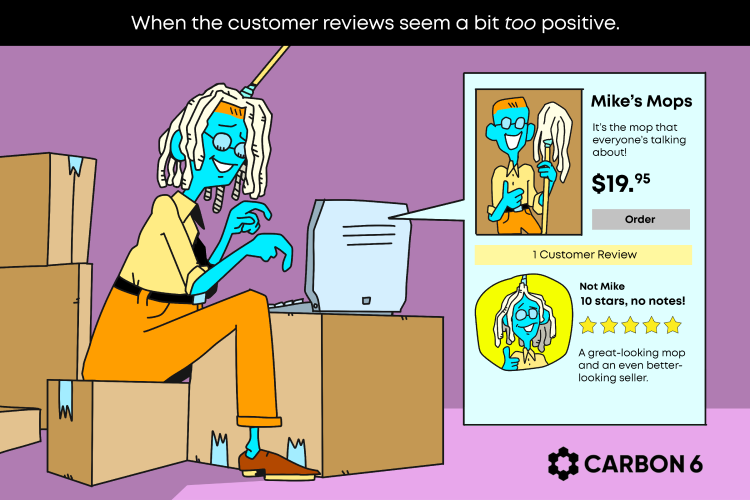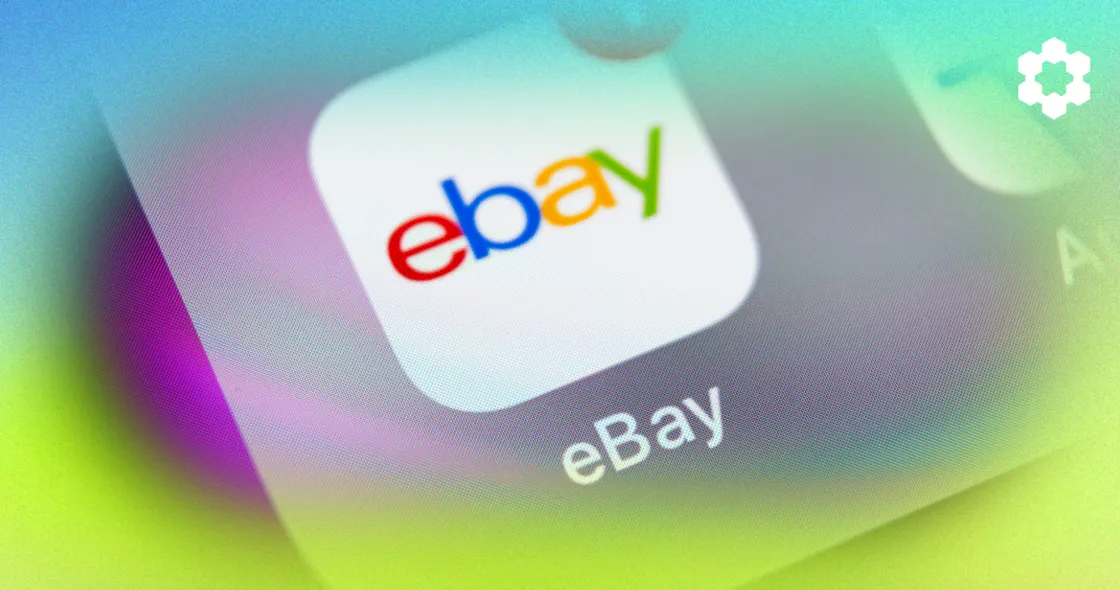Breaking News Recap
A couple of weeks ago, our Top Amazon Reads newsletter broke the story about the Federal Trade Commission’s (FTC) impending crackdown on fake reviews. Today, we’re diving deeper into what this means for Amazon sellers and the ecommerce landscape at large.
FTC Fake Review Ban Explained
On August 14, 2024, the FTC announced a final rule aimed at combating fake reviews and testimonials, a move that will have far-reaching implications, particularly for global ecommerce giants like Amazon.
With the final rule now in place, the agency is positioned to combat deceptive practices, including AI-generated fake reviews, by introducing strict penalties and enforcement measures. This development marks a pivotal moment for both US and international markets, especially as it targets the integrity of online reviews—a cornerstone of consumer trust.
Key Prohibitions Under the New Rule
1. Fake or False Reviews and Testimonials
The rule strictly prohibits the creation, sale, or dissemination of fake or false consumer reviews, testimonials, and celebrity endorsements. This includes reviews generated by AI or any that misrepresent the reviewer’s actual experience with the product or service.
For instance, a business cannot post a review from a non-existent person or one that exaggerates the reviewer’s satisfaction. Violating this prohibition can lead to significant penalties, ensuring that only authentic feedback influences consumer decisions.
2. Buying Positive or Negative Reviews
Businesses are barred from offering compensation or incentives in exchange for reviews that express a specific sentiment—whether positive or negative. The rule clarifies that even implicit offers of compensation for a biased review are prohibited.
This measure is particularly important for maintaining honest competition in the marketplace, as it prevents companies from artificially inflating or deflating their product ratings through paid reviews.
3. Insider Reviews and Testimonials
The rule also targets insider reviews, which are testimonials written by individuals with a material connection to the business—such as officers, managers, or employees—without clear disclosure of this relationship. The FTC prohibits businesses from promoting such reviews unless the affiliation is transparently communicated. Additionally, the rule restricts officers or managers from soliciting reviews from employees’ relatives, further tightening the standards for genuine feedback.
4. Misleading Review Websites
The rule addresses the issue of company-controlled review websites that falsely claim to offer independent opinions. Businesses are now prohibited from misrepresenting the independence of a review platform they control. This is crucial in ensuring that consumers can trust the objectivity of the reviews they read online.
5. Review Suppression
The final rule prohibits the suppression of negative reviews, aka review gating, through unfounded legal threats, intimidation, or misinformation. It also bars businesses from misrepresenting that all submitted reviews are published when, in reality, some have been excluded due to negative sentiment. This ensures that consumers see a balanced representation of feedback, rather than a skewed, overly positive picture.
6. Misuse of Social Media Indicators
Finally, the rule bans the sale or purchase of fake social media indicators, such as followers or views generated by bots or hijacked accounts. These fake metrics can mislead consumers about a business’s popularity or influence, and the rule’s prohibition helps maintain the authenticity of social media engagement.
The rule is set to take effect 60 days after its publication in the Federal Register, marking a significant shift in the regulatory landscape for ecommerce.
Impact on Amazon

Amazon has long been a battleground for bogus reviews, and the FTC fake review rule directly targets the platform’s ongoing struggles. Under the new regulations, Amazon must take even more stringent actions to ensure the authenticity of reviews on its US marketplace.
The agency’s rule prohibits the creation, sale, or dissemination of fake reviews, including those generated by AI, and imposes severe penalties for violations—up to $51,744 per incident. This move will likely force Amazon to bolster its current review monitoring systems, which already rely heavily on AI to detect and remove inauthentic feedback.
For Amazon sellers in the US, this new rule represents both a challenge and an opportunity. Here’s what you need to know:
Heightened Scrutiny
Expect Amazon to ramp up its review monitoring and enforcement efforts to align with FTC guidelines. For example, in 2022, Amazon took legal action against the administrators of more than 10,000 Facebook groups dedicated to orchestrating fake reviews. These groups were responsible for recruiting individuals to write paid or incentivized reviews in exchange for free products or money. Amazon’s lawsuit was a significant step, but with the FTC’s new rule, the stakes are even higher.
Enhanced Algorithms for Detection
As fake reviews become more complex—especially with the rise of AI-generated reviews—Amazon’s algorithms will need to adapt. Machine learning can help Amazon identify patterns in review behavior that human moderators might miss.
For example, large numbers of reviews posted in a short time period, reviews that are overly generic, or a sudden spike in positive feedback for a new product can all be red flags for inauthentic activity.
AI can also assess the language used in reviews. Natural Language Processing (NLP) allows AI to evaluate whether a review seems artificially generated by detecting repetitive phrasing, unnatural syntax, or overly positive language that doesn’t align with the product’s quality. This technology has already been deployed in some capacity, but Amazon is expected to refine it further to stay compliant with the FTC’s rule.
Consequently, Amazon may intensify its scrutiny of sellers who attempt to manipulate reviews. As the FTC rule prohibits not only fake reviews but also insider testimonials and incentivized feedback, sellers who rely on such practices to boost their product ratings will face more immediate consequences. This could include account suspension or even legal action if violations are severe.
Legitimate Marketing Practices
With the FTC fake review ban, the distinction between legitimate marketing practices and rule violations has become increasingly complex, requiring you to navigate a fine line to ensure compliance. This new regulation places a significant focus on the manipulation of reviews through incentives, potentially blurring the boundaries between acceptable marketing strategies and prohibited activities.
Incentivizing Reviews: A Risky Strategy

Sellers often rely on various tactics to encourage customer reviews, as these can significantly impact product visibility and sales. Offering discounts, coupons, or other incentives in exchange for reviews has been a common practice. However, under the FTC’s new rule, even indirect incentives could be seen as violations if they are perceived as influencing the sentiment of the review.
For instance, offering a discount to customers who leave any type of review might seem harmless, but if the incentive is structured in a way that encourages positive feedback, it could be considered deceptive.
The FTC fake review rule specifically prohibits the conditional nature of such incentives, whether conveyed explicitly or implicitly. This means that even if a seller does not directly ask for a positive review, the mere suggestion that a reward is tied to the sentiment of the feedback could cross the line. This presents a challenge for sellers who must now re-evaluate their marketing strategies to avoid inadvertently violating the rule.
For example, a company offering a discount on a future purchase should make it clear that the discount is not contingent on leaving a review, nor is it tied to the content of any feedback provided. This level of transparency will be crucial in distinguishing legitimate marketing from practices that might violate the FTC’s rule.
Competitor Monitoring
The new rule could provide a legal basis for reporting competitors engaged in fake review practices. The ability to report competitors is particularly impactful in highly competitive industries where product reviews significantly influence consumer decisions.
According to BrandRated, 95% of consumers read online reviews, with 58% saying they’d pay more for the products with good reviews. This highlights how crucial reviews are in shaping consumer behavior and driving sales.
In this environment, fake reviews can give dishonest businesses an undue advantage, skewing consumer perceptions and diverting sales from companies that engage in ethical practices. The FTC’s rule levels the playing field, allowing you to monitor your competitors more closely and report any suspicious activities.
Suppose you notice a sudden, suspicious spike in glowing reviews for a competitor’s product—especially if those reviews appear overly generic or are posted in a very short time frame—you can expose this activity to the FTC or a dedicated Amazon fake review report channel.
The new rule allows the FTC to impose civil penalties, making the stakes incredibly high for sellers caught violating these regulations. By reporting violators, you can help clean up the marketplace, ensuring that product quality and customer service—not deceptive marketing—determine success.
Note that while the ability to report competitors is a powerful tool, you must exercise caution. False accusations or misunderstandings about what constitutes a violation under the new rule could lead to legal repercussions or damage to your company’s reputation. Therefore, ensure that you have concrete evidence before reporting a competitor to the FTC.
Customer Relationship Management
Given the heightened scrutiny under the FTC’s rule, you may need to overhaul your customer relationship management (CRM) strategies. Instead of incentivizing reviews, focus on creating exceptional customer experiences that naturally encourage positive feedback.
This can be achieved through:
- Providing Outstanding Service: Ensuring that customers have a seamless and satisfying experience from start to finish can naturally lead to positive reviews. Happy customers are more likely to share their experiences without needing an incentive.
- Soliciting Feedback Transparently: Ask for reviews directly but must be careful to avoid suggesting that a positive review will result in a reward. A transparent approach might involve asking customers to share their honest opinions to help other shoppers make informed decisions.
- Utilizing Follow-Up Communication: Sending follow-up emails after a purchase, thanking customers for their business, and politely requesting feedback can be an effective way to gather reviews. These communications should emphasize that the review is voluntary and should reflect the customer’s true experience. Consider automating review requests with SellerTools to simplify the process of collecting customer reviews.
- Leveraging Social Proof: Sellers can highlight existing positive reviews on their product pages and marketing materials to encourage others to leave feedback. When customers see that others have had positive experiences, they may be more inclined to share their own.
- Engaging Through Social Media: Social media platforms can be a powerful tool for engaging with customers and encouraging reviews. Businesses can create campaigns that invite customers to share their experiences online, without offering any direct incentives.
Potential for Higher Costs
As sellers shift their focus to acquiring real reviews, the competition for organic visibility and paid advertising spots will intensify, making it harder for new or smaller sellers to break through.
On Amazon, the cost-per-click (CPC) for certain keywords could rise as more sellers bid for the same ad space. According to a 2024 report by Mabaya, the average CPC on Amazon increased by 10% for Sponsored Brands and 3% for Sponsored Products year-over-year. This trend could accelerate as sellers compete for visibility in an environment where organic rankings become harder to manipulate.
In addition, the increased competition for visibility may force some sellers to enhance their SEO strategies, improve product descriptions, and engage in more aggressive content marketing. These efforts will require additional time, resources, and expertise.
International Market Implications
While the FTC’s jurisdiction is limited to the United States, the impact of this rule is likely to ripple across international markets.
Amazon operates in over 18 countries, and many sellers who post reviews on the US platform are based overseas. The challenge lies in enforcing these rules beyond US borders, especially in regions where regulatory oversight might be less stringent. However, Amazon’s commitment to maintaining a trustworthy platform will likely lead to a global tightening of review policies.
International sellers will need to be more cautious, as the FTC’s crackdown could influence other regulatory bodies worldwide to adopt similar measures. Countries with large Amazon marketplaces, such as the UK, Germany, and Japan, may see their own regulatory agencies following the FTC’s lead, creating a more globally consistent approach to combating fake reviews.
The Role of AI in Review Moderation
Here’s how AI can be used in both the enforcement of the FTC’s new rule and Amazon’s efforts to comply.
- AI-Powered Detection: Platforms like Amazon are likely to lean heavily on AI algorithms to detect and remove fake reviews at scale.
- Natural Language Processing: Advanced NLP models may be employed to analyze review content for authenticity and sentiment.
- Pattern Recognition: AI can help identify suspicious patterns in review posting behavior, flagging potential violations for human review.
- Continuous Learning: As fraudsters adapt their tactics, AI systems will need to evolve continuously to stay ahead of new forms of review manipulation.
However, generative AI tools like ChatGPT can also be used by fraudsters to generate fake glowing customer reviews to manipulate a product’s rating.

Moreover, the potential for AI errors means that sellers cannot solely rely on automated systems for review management.
Examples of AI errors in detecting or moderating fake customer reviews include:
False Positives and Negatives
- Mislabeling Genuine Reviews: AI systems may incorrectly flag legitimate reviews as fake. For instance, a review from a genuine customer might be labeled as fraudulent if it contains certain keywords or patterns similar to those found in fake reviews. This misclassification can lead to the removal of authentic feedback, damaging a seller’s reputation.
- Overlooking Fake Reviews: Conversely, AI may fail to identify fake reviews, allowing them to remain on the platform. In 2022, several Amazon sellers complained that their attempts to address fake reviews were undermined because the AI systems did not detect or act on fraudulent activity as intended.
Inconsistent Enforcement
- Variation in Review Treatment: Different products or sellers may experience inconsistent enforcement of review policies. For example, your product might be unfairly targeted by AI, while a competitor’s fake reviews go unnoticed. This inconsistency can lead to unfair competition and skewed market conditions.
Context Misinterpretation
- Ignoring Contextual Nuances: AI algorithms often struggle with understanding the context in which a review is written. For example, a review that uses humor or sarcasm might be misinterpreted as a fake review, leading to its removal.
Algorithmic Bias
- Prejudice in Detection Algorithms: AI systems can inherit biases from their training data. For example, algorithms trained on data with a high incidence of certain review patterns might be more likely to flag similar patterns, even if they are legitimate. This has led to accusations that some AI systems unfairly target reviews from specific regions or demographics.
Lack of Transparency
- Unclear Moderation Processes: In this report, some sellers have reported a lack of transparency in how Amazon’s AI systems determine which reviews are flagged or removed. This opacity can result in sellers not understanding why their reviews were targeted, leading to frustration and the inability to address underlying issues. For instance, some sellers have complained about not being informed about the specific reasons their reviews were flagged, making it difficult to resolve disputes.
Over-Reliance on Automated Systems
- Neglecting Human Oversight: Over-reliance on AI without adequate human oversight can exacerbate errors. For example, in 2020, Amazon faced criticism for its automated review systems that failed to detect coordinated fake review schemes. This was partly due to an over-reliance on algorithms without sufficient human review to catch nuanced patterns of fraud.
These errors underline the importance of a balanced approach, where sellers must complement AI systems with their vigilance.
How Amazon is Responding
Amazon has been proactive in addressing fake reviews, even before the FTC’s announcement:
AI Detection
Amazon has invested heavily in AI-powered systems to detect and remove fake reviews. In 2022, the ecomm giant announced it had removed hundreds of thousands of fake reviews from its platform, particularly from its own AmazonBasics listings. This move was part of a broader crackdown on inauthentic reviews, leveraging AI to spot irregularities and flag fraudulent content.
Legal Action
Amazon collaborates with law enforcement agencies to combat review fraud and has pursued legal action against those engaged in fraudulent activities. In 2021, the company sued several individuals and companies involved in selling fake reviews, including a lawsuit against the operators of fake review groups on Facebook. This legal action aimed to dismantle organized schemes that were manipulating review systems.
Two years later, Amazon’s legal efforts led to the closure of over 3,000 fake review groups and resulted in significant legal settlements against fraudulent actors.
Automated Removal
Back in February, we reported that Amazon has automated the removal of product reviews from buyers who have violated the platform’s customer review policy. This move aligns with the growing regulatory scrutiny, particularly with the FTC proposing a rule that could impose fines of up to $50,000 per violation for non-compliance.
Stricter Community Guidelines
Amazon has updated its community guidelines to prohibit various forms of review manipulation, including fake reviews, incentivized reviews, and reviews from insiders.
In 2016, Amazon revised its Community Guidelines to ban unethical practices related to reviews, while making exceptions for its Vine program, which is a legitimate review program involving selected reviewers who provide unbiased feedback.
Enhanced Seller Tools
Amazon provides sellers with tools to monitor and manage their reviews, aiming to offer greater control over their feedback.
For instance, the Voice of the Customer dashboard, introduced in 2021, allows sellers to track review patterns and gain insights into customer feedback. This tool helps sellers identify and address any irregularities in their reviews more effectively.
User Education and Reporting Mechanisms
Amazon educates users about its review policies and provides mechanisms for reporting suspicious reviews.
The ecomm giant regularly updates its help pages and blog posts to inform customers and sellers about how to spot and report fake reviews. The platform also has a dedicated reporting system where users can flag reviews they suspect to be fake.
Action Items for Sellers
To stay compliant and competitive in this new regulatory environment, Amazon sellers should consider the following actions:
- Review Your Policies: Audit your current review solicitation and management practices for compliance with the new FTC rule. Needless to say, avoid requesting that your employees write reviews about your business unless they clearly disclose their employment status and that they were asked to provide the review.
- Educate Your Team: Ensure all team members involved in customer interactions and marketing are aware of the new regulations.
- Focus on Organic Growth: Double down on strategies that naturally encourage positive customer experiences and genuine reviews, which may lead to increased consumer trust and loyalty.
- Monitor Your Listings: Regularly check your product listings for any suspicious review activity that could flag your account. Ensure your reviews are genuine and transparent, as any association with fake reviews could lead to penalties not only from Amazon but also from the FTC.
- Stay Informed: Keep up with updates from Amazon and the FTC regarding review policies and enforcement actions.
The Future of Ecommerce Reviews
The FTC fake review ban marks a significant milestone in the evolution of ecommerce. As the landscape shifts, we can expect:
- Increased Trust: As fake reviews become less prevalent, consumer trust in online reviews may increase.
- Innovation in Feedback Systems: Platforms and sellers may develop new ways to showcase product quality and customer satisfaction.
- Emphasis on Verified Purchases: The importance of reviews from verified purchasers is likely to grow.
- Integration of Social Proof: Alternative forms of social proof, such as user-generated content, may gain prominence.
- Global Standardization: We may see a move towards more standardized review practices across international ecommerce platforms.
The FTC’s crackdown on fake reviews is a clear signal that the wild west days of ecommerce are coming to an end. For ethical Amazon sellers, this presents an opportunity to stand out in a more level playing field. By focusing on genuine customer satisfaction and adhering to best practices, sellers can not only comply with the new regulations but also build stronger, more sustainable businesses in the long run.
Stay ahead of the curve by subscribing to our Top Amazon Reads newsletter for the latest updates and insights on Amazon selling strategies.







